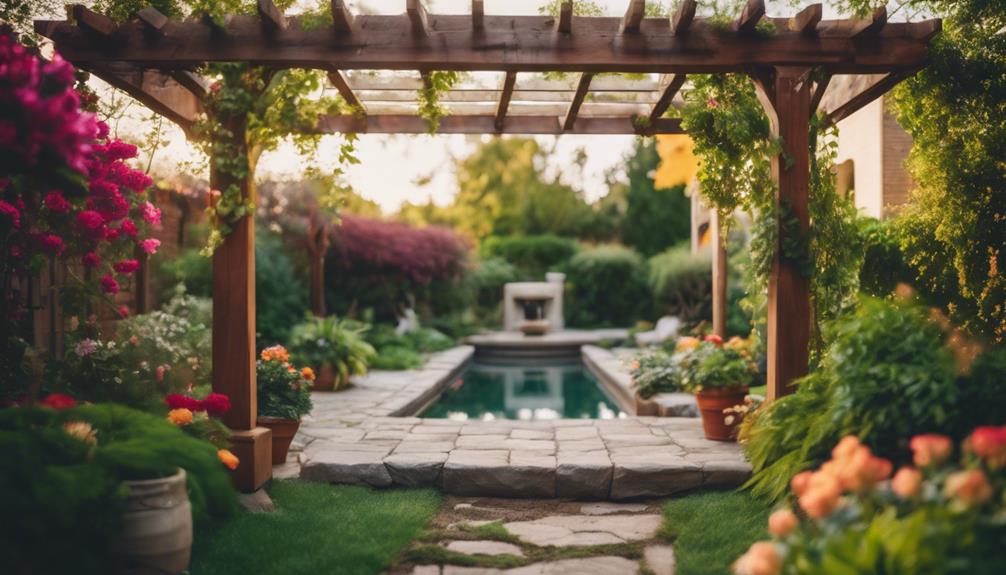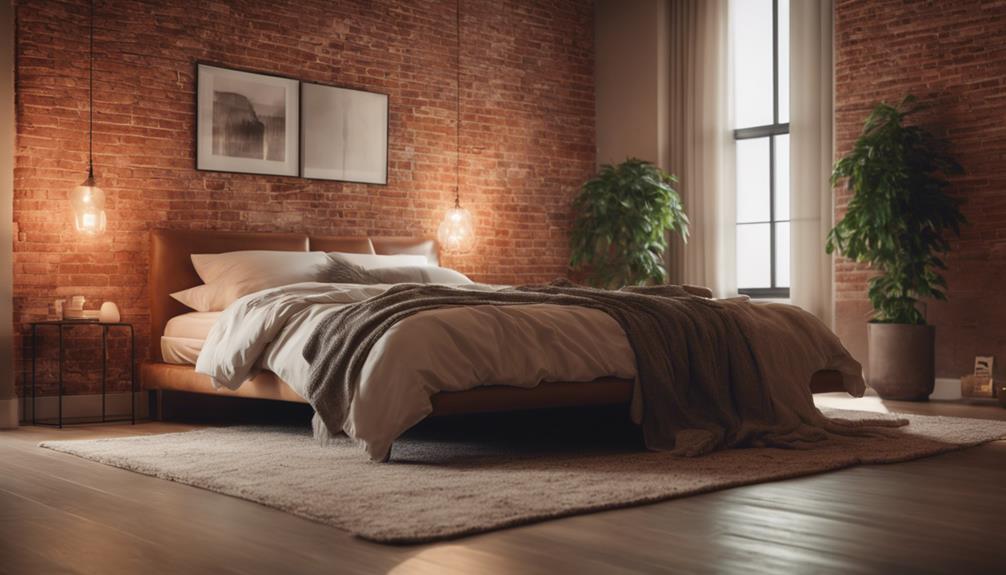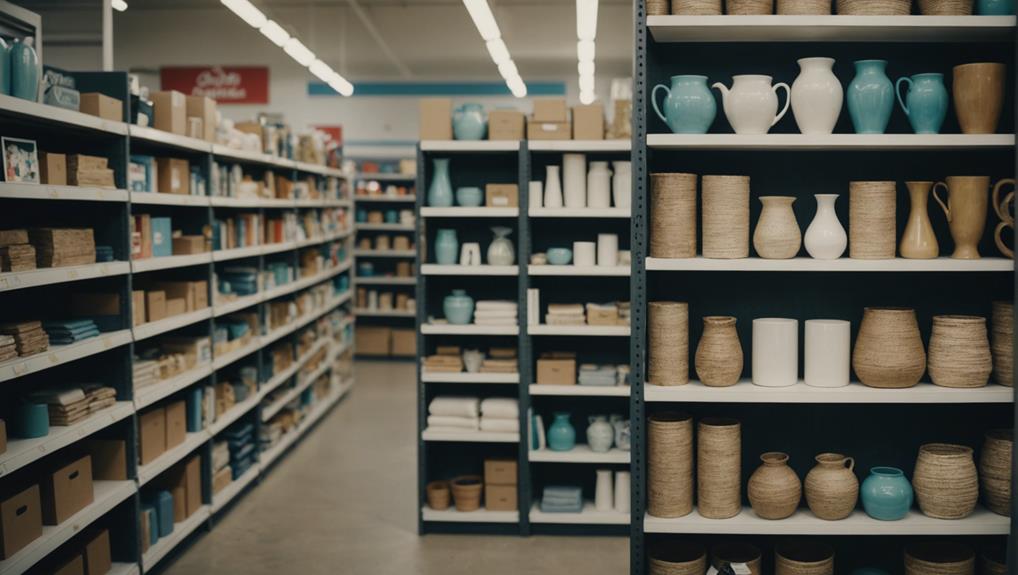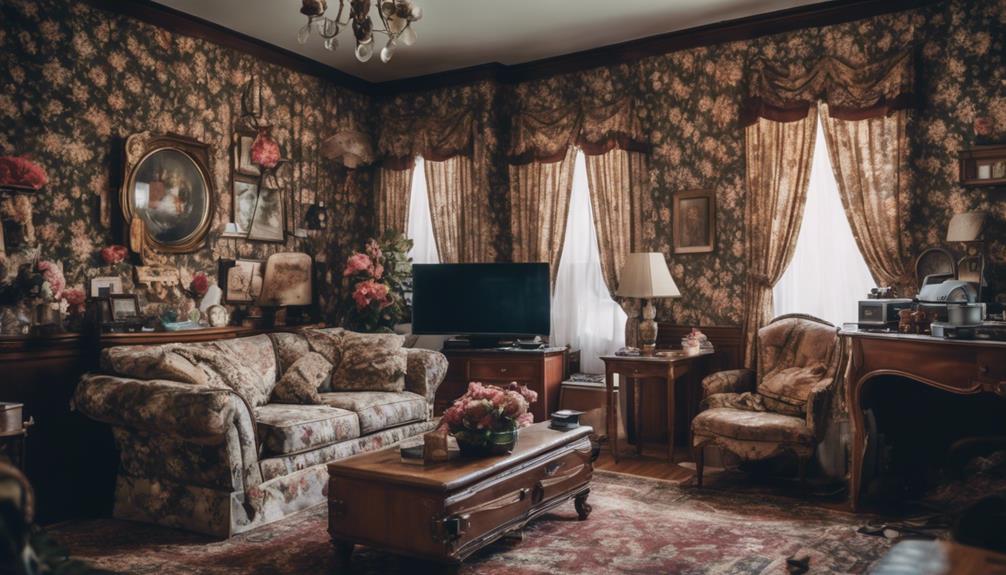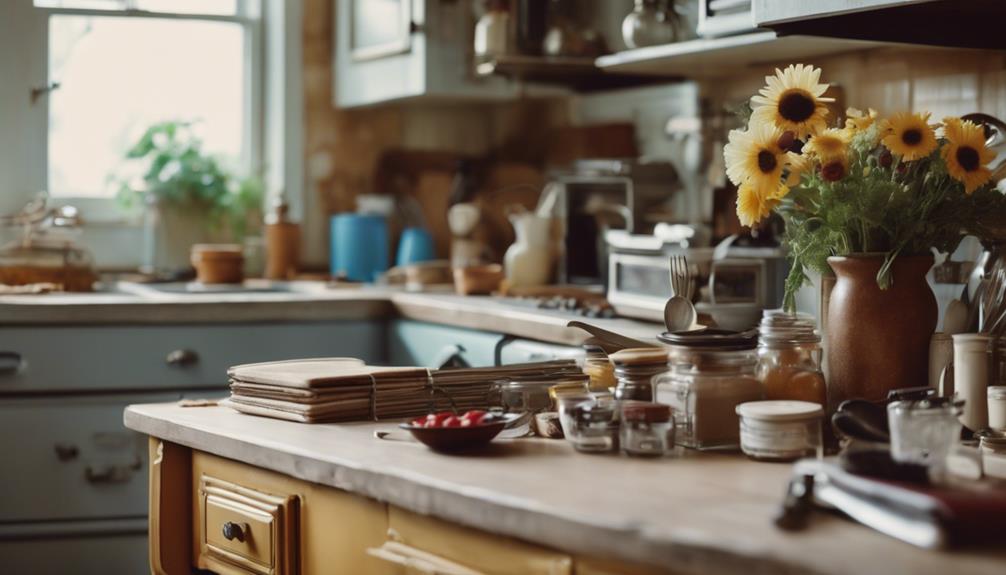We're about to start on a thorough pergola remodeling journey, covering everything from planning and material selection to customization, electrical integration, and maintenance. Our guide will walk you through choosing the perfect location, selecting the right design and style, and picking the best materials for your budget and aesthetic. We'll explore customization options, lighting and electrical integration, and hardscaping and landscaping to create a harmonious blend of form and function. With expert tips on safety, maintenance, and ambiance-enhancing elements, we'll help you create an outdoor oasis that's both beautiful and functional. Let's get started and uncover the secrets to creating your dream pergola!
Key Takeaways
• Consider the purpose and location of your pergola, taking into account the sun's path and wind direction for optimal placement.
• Choose a design that complements your outdoor space, selecting from modern or classic aesthetics, various shapes, and sizes.
• Balance aesthetic appeal, cost, and durability when selecting materials, such as wood, aluminum, vinyl, or fiberglass, each with unique benefits.
• Ensure proper installation, including a sturdy foundation, electrical integration, and drainage systems to prevent water damage and maintain safety.
• Customize your pergola with lighting, textiles, and furniture to create a cohesive outdoor retreat that suits your style and functionality needs.
Choosing the Perfect Pergola Location
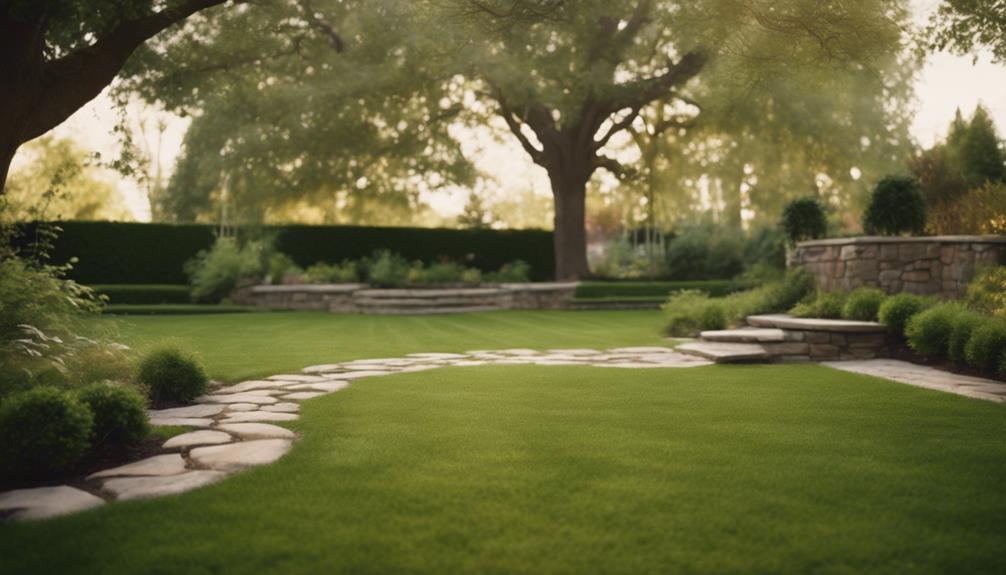
When determining the location for our pergola, we need to consider the sun's path and wind direction to maximize shade and comfort in our outdoor space. By doing so, we can provide shade and create a cozy atmosphere perfect for relaxing or entertaining.
We should take into account the specific purpose we want our pergola to serve, whether it's to enhance our living space, provide shade, or protect our garden. This will help us choose a location that complements our existing landscape and architecture.
To guarantee accurate placement, we can use precise measurement tools like StruXures PergolaX and PBS. By evaluating the specific purpose of our pergola, we can strategically place it in a location that meets our needs.
For instance, if we want to create a cozy outdoor seating area, we'll want to position our pergola in a spot that receives the right amount of sunlight and provides protection from harsh winds. By taking these factors into consideration, we can create an outdoor space that's both functional and enjoyable.
Selecting Pergola Design and Style
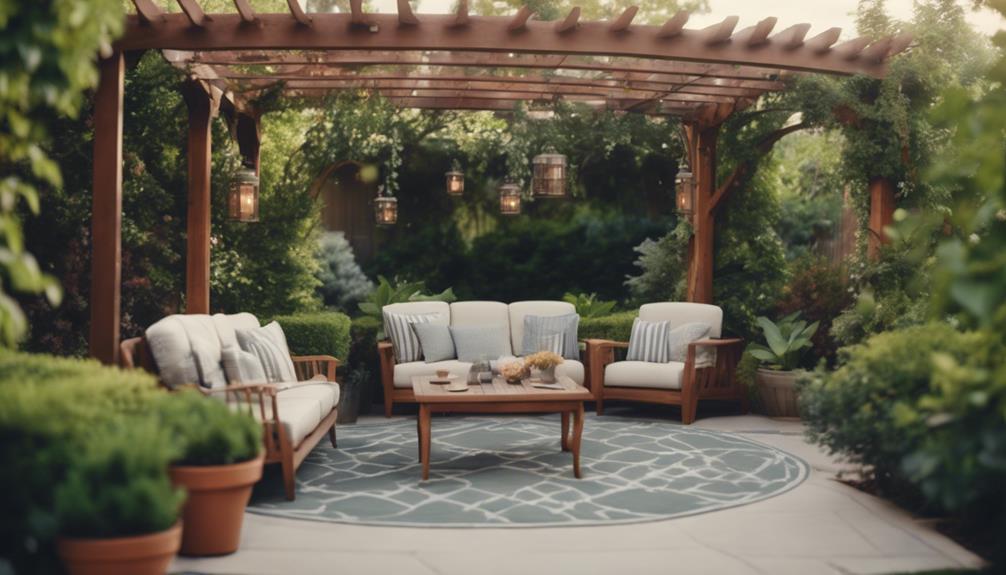
As we progress with our pergola remodeling project, we're now faced with the exciting task of choosing a design and style that fits our outdoor space and personal taste.
We'll need to contemplate the shape and form of our pergola, whether we prefer a modern or classic aesthetic, and the ideal size and scale for our yard.
Let's explore these factors to find the perfect design that complements our outdoor area.
Pergola Shapes and Forms
Selecting the right pergola shape and form is essential, as it sets the tone for our outdoor space's overall style and ambiance. We want to create a space that not only looks great but also complements our home's aesthetic appeal.
When choosing a pergola shape, we've several options to ponder. For a classic look, we can opt for traditional rectangular or square shapes, which are also easy to construct. If we want to add a modern twist, arched or curved pergola designs can create a unique and contemporary aesthetic.
For a more visually interesting design, hexagonal or octagonal shapes can create a focal point in our outdoor space. We can also choose between a gable roof for added height and a more architectural look or a flat roof design for a minimalist and streamlined appearance that complements modern settings.
Modern Vs. Classic Style
We're faced with a fundamental choice when designing our outdoor space: embracing the sleek sophistication of modern pergola designs or opting for the timeless charm of classic styles. This decision will greatly impact the overall look and feel of our outdoor living space.
Modern pergola designs feature clean lines, sleek materials like aluminum or fiberglass, and adjustable louvers for best shade control. They offer a contemporary feel and easy customization options.
On the other hand, classic pergolas typically use traditional materials like redwood or cedar, with intricate wooden lattice work and timeless architectural features. They exude warmth and charm with natural wood elements.
The choice between modern and classic styles depends on our personal preference, desired aesthetic, and the overall look of our outdoor space. By selecting the right pergola design and style, we can create an outdoor space that reflects our unique taste and complements our home's architecture.
Pergola Size and Scale
With our preferred pergola style in mind, we now need to contemplate the size and scale of our outdoor structure to guarantee a harmonious balance with our outdoor space. The size of our pergola should be proportional to the available space, ensuring a sense of harmony and visual appeal. A larger pergola in a small yard can overwhelm the space, while a small pergola in a large yard can get lost.
| Pergola Style | Size Range | Recommended Use |
|---|---|---|
| Modern | 8' x 8' to 12' x 12' | Dining or lounging |
| Traditional | 10' x 10' to 15' x 15' | Entertaining or gardening |
| Rustic | 12' x 12' to 18' x 18' | Outdoor kitchen or gathering space |
| Custom | Varies | Depends on specific needs and design |
Considering the size and scale of our pergola will also impact our budget, as larger structures require more materials and construction time. By choosing the right size and style, we can create a cohesive look that complements our home's architectural style and meets our outdoor living needs. A rustic appeal can add a cozy, natural ambiance to our outdoor space, while a modern design can create a sleek, contemporary look.
Pergola Materials and Cost Analysis
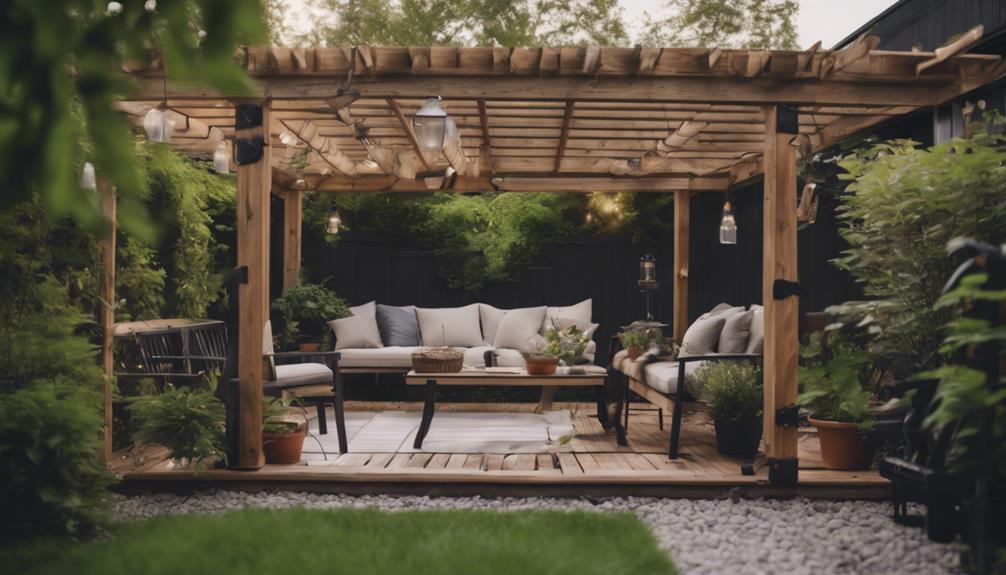
As we explore the world of pergola remodeling, one of the most essential factors to ponder is the type of material we choose, as it greatly affects not only the aesthetic appeal but also the overall cost and maintenance requirements of our outdoor structure.
When it comes to pergola materials, we've several options to contemplate. Wooden pergolas, made from redwood, cedar, or pine, offer a classic look and durability at a cost of $2,000 to $5,000. For a modern aesthetic, aluminum, vinyl, and fiberglass pergolas range from $3,000 to $8,000, each offering varying benefits and price points.
We must take material costs into account when planning a pergola remodel, weighing the benefits of low-maintenance aluminum against the natural feel of wood. The choice of material impacts the longevity and maintenance requirements of the pergola, influencing the overall cost of the remodeling project.
Building a Custom Pergola Structure
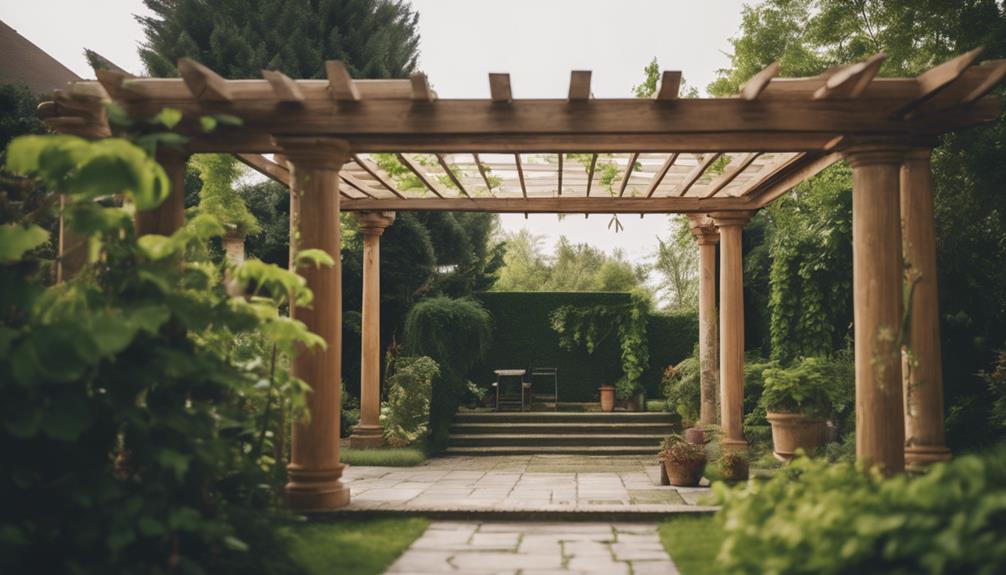
Typically, homeowners seeking a unique outdoor space opt for custom pergola structures that cater to their specific size, shape, and design preferences. This allows us to create an outdoor oasis that reflects our personal style and complements our existing outdoor space.
When building a custom pergola, we've various materials to choose from, including wood, aluminum, vinyl, and fiberglass. This flexibility guarantees we can find an affordable option that meets our budget and design requirements.
Here are three benefits of building a custom pergola structure:
- Tailored design: Custom pergolas can be designed to match our existing outdoor space and architectural style.
- Enhanced functionality: We can incorporate features like adjustable louvers, lighting fixtures, fans, heaters, and screens to enhance our outdoor experience.
- Personalization: A custom pergola allows us to add personal touches and create a unique outdoor space that reflects our personality.
Incorporating Lighting and Electrical

We can elevate our outdoor ambiance and functionality by incorporating lighting and electrical elements into our custom pergola design. Lighting, in particular, plays an important role in creating a warm and inviting atmosphere.
To achieve this, we can consider adding low-voltage LEDs, which provide energy efficiency and subtle illumination. Dimmable lighting options are also a great idea, allowing us to adjust the ambiance and create different moods in our outdoor space.
For added convenience, we can install weather-resistant outlets, making sure easy access to power for our electronic devices. Additionally, incorporating motion sensor lighting can enhance security and convenience when using our pergola at night.
It's crucial to hire a licensed electrician to guarantee proper installation and compliance with electrical codes. By incorporating these lighting and electrical elements, we can transform our pergola into a functional and inviting outdoor oasis.
Pergola Hardscaping and Landscaping
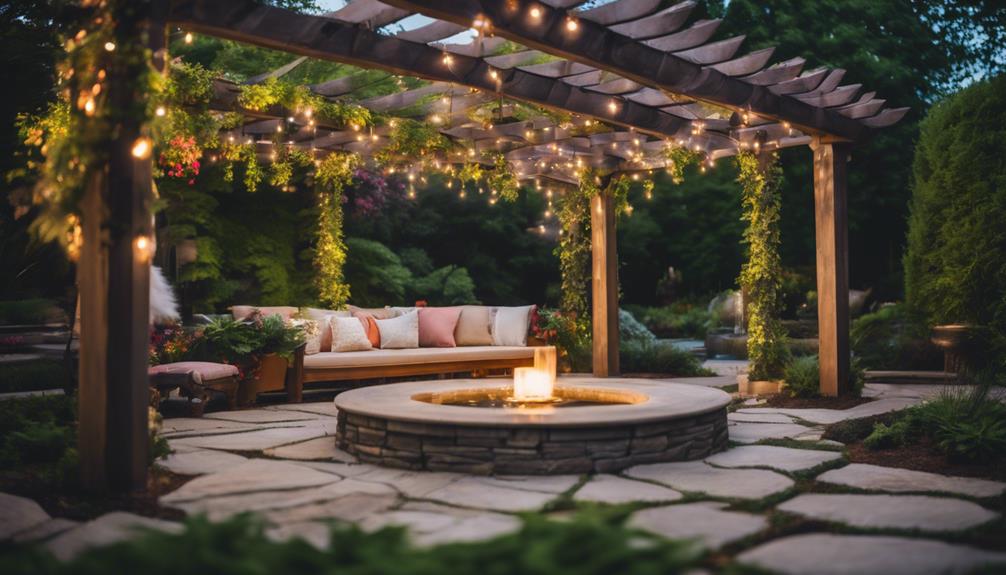
As we move forward with our pergola remodeling project, we'll focus on the vital aspects of hardscaping and landscaping.
Now, we need to turn our attention to the foundation of our pergola, considering the design of the footing, preparing the site, and implementing effective drainage systems.
Pergola Footing Design
When designing a pergola, we must choose the appropriate footing materials, such as concrete, to guarantee stability and durability. This important step guarantees our pergola structure is secure and can withstand various weather conditions.
To create a pergola that lasts, we need to take into account the soil composition and drainage in the area when designing footings.
Here are some key factors to keep in mind:
- Soil composition: Understanding the soil type and its bearing capacity helps us determine the size and depth of the footings.
- Weight and size of the pergola: The larger and heavier the pergola, the deeper and wider the footings need to be.
- Local building codes and professional guidance: It's vital to consult with a professional or follow local building codes to ensure our pergola footings are secure and long-lasting.
Pergola Site Preparation
Before breaking ground on our pergola project, we'll need to prepare the site by carefully planning and executing hardscaping and landscaping elements that will support and complement our structure. This essential step guarantees that our pergola stands the test of time and becomes a stunning focal point for our outdoor space.
When hardscaping for our pergola, we'll rely on concrete to set our posts and footers, ensuring stability and longevity. To achieve successful brickwork, we'll aim for a peanut butter-like consistency with our mortar mix, making the process smoother and more efficient with the help of a plastic mortar tub. While hardscaping with concrete and mortar can present challenges, the reward is a solid foundation for our pergola.
Landscaping around our pergola will further enhance the overall aesthetic, providing a cohesive and inviting outdoor space perfect for relaxation and entertainment – and, of course, Instagram-worthy moments to share on social media! By dedicating time to proper site preparation, we'll create a beautiful and functional outdoor oasis that we'll cherish for years to come.
Pergola Drainage Systems
By incorporating a thoughtful drainage system into our pergola design, we can protect our investment and guarantee our outdoor haven remains beautiful and functional for years to come. A well-planned drainage system prevents water accumulation, which can damage the structure and surrounding landscaping. We can choose from various options, including downspouts, gutters, and sloped designs to direct water away from the pergola.
Here are three essential considerations for our pergola drainage system:
- Gravel or permeable pavers: Incorporating these around the pergola can aid in water drainage and reduce erosion.
- Strategic placement: We should place our drainage systems strategically to maintain the integrity of the pergola and enhance the overall landscaping design.
- Local store resources: We can visit our local store to explore various drainage solutions and materials, ensuring we find the perfect fit for our pergola.
Adding Aesthetic Elements and Accessories
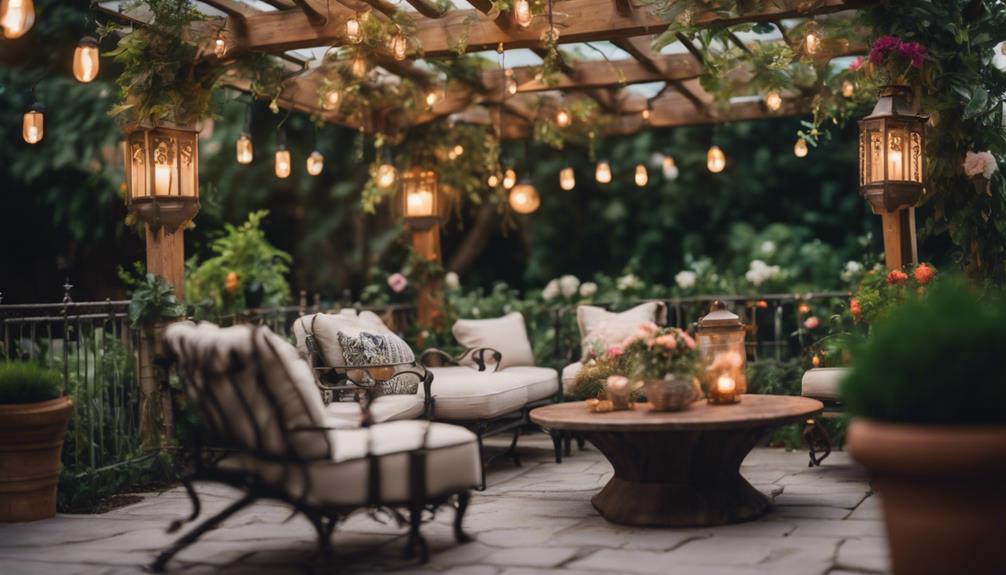
We can elevate our pergola's ambiance and functionality by incorporating thoughtful aesthetic elements and accessories. To add beauty to our outdoor space, we can start by introducing natural elements like hanging plants, vines, or climbing flowers. This not only adds a touch of elegance but also brings in a sense of serenity.
For a more intimate atmosphere, we can install outdoor curtains, which provide privacy, sun protection, and a hint of sophistication. To create an inviting ambiance, we can install outdoor speakers or a sound system, perfect for entertaining or relaxing.
For those cooler evenings, a fire pit or outdoor fireplace can add warmth and coziness to our pergola space. Finally, we can opt for retractable awnings or shades to control the amount of sunlight filtering in, providing flexibility and comfort.
Ensuring Safety and Maintenance
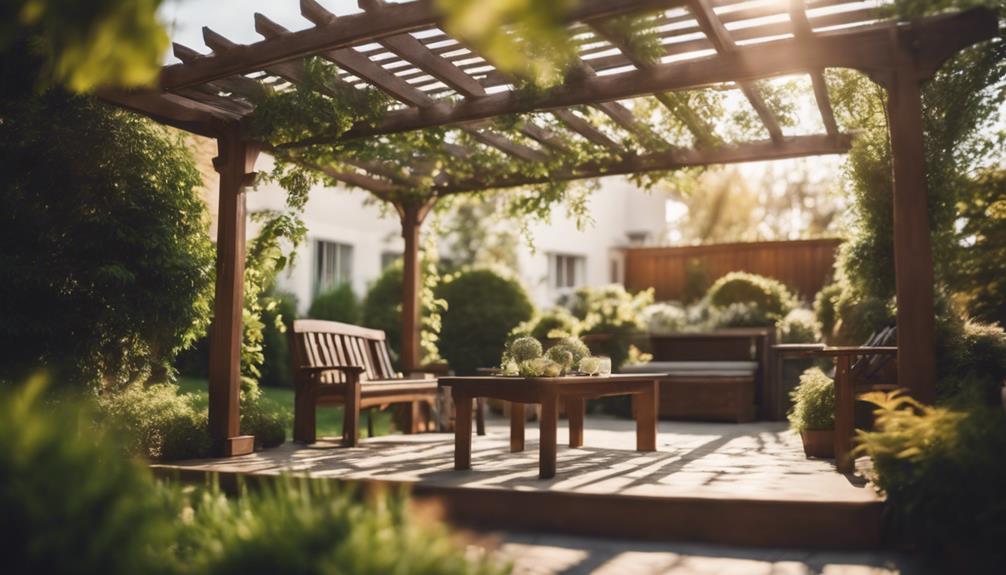
As we transform our outdoor space into a beautiful retreat, ensuring our pergola's safety and maintenance is crucial to guarantee a secure and enjoyable experience for everyone. We need to prioritize regular inspections to identify any signs of wear, rot, or damage that could compromise the structure's integrity.
To maintain our pergola's condition, we should:
- Regularly inspect the structure for signs of wear, rot, or damage.
- Clean the pergola regularly to prevent mold, mildew, and debris buildup.
- Use protective finishes to shield the material from weather damage and prolong its lifespan.
Enhancing Ambiance With Textiles and Furniture

With our pergola's structure secure and well-maintained, it's time to focus on creating a warm and inviting ambiance that beckons us to linger. We're excited to explore the world of outdoor textiles and furniture to enhance our pergola's ambiance.
To start, we'll incorporate outdoor textiles like curtains, rugs, and cushions to add warmth and style to our space. We'll choose weather-resistant fabrics for longevity and easy maintenance.
Next, we'll introduce outdoor furniture pieces made from durable materials like teak, aluminum, or resin wicker. Cozy seating, dining sets, and loungers will create a functional and inviting atmosphere.
To complete the look, we'll add decorative elements like lanterns, throw pillows, and outdoor rugs to create a cohesive and welcoming outdoor retreat. By thoughtfully selecting textiles and furniture, we'll craft an ambiance that's both beautiful and functional, perfect for relaxation and entertainment.
Frequently Asked Questions
What Is the Golden Ratio for a Pergola?
We're curious about the golden ratio for a pergola. This ratio, derived from the Fibonacci sequence, is approximately 1.6:1 for length to width.
It's believed to create visually pleasing proportions, making the structure harmonious and balanced. By applying this ratio, we can enhance our pergola's appeal and symmetry.
Many designers use this principle to create stunning structures, and we can too!
Does a Pergola Add Value to Property?
We're not exaggerating when we say a pergola can be a game-changer for your property's value. According to the National Association of Realtors, a pergola can increase your property value by up to 20%! That's a significant boost.
Not only do pergolas enhance curb appeal, but they also create an attractive outdoor living space that buyers love. It's a smart investment that can lead to a higher sale price and faster sale.
How Do I Make My Pergola Look Pretty?
We want to make our pergola look pretty! To do so, we'll start by adding some natural beauty with climbing plants like wisteria or roses.
Then, we'll incorporate colorful outdoor decor like cushions, throw pillows, and rugs to bring some vibrancy to the space.
Are Pergola Kits Worth It?
We think pergola kits are worth considering. They save us time and labor with pre-cut materials and easy assembly instructions. Plus, they're cost-effective, ranging from $400 to $6,000, depending on size and materials.
While customization options may be limited, kits come in various styles and materials, suiting different tastes. With basic tools and skills, DIY enthusiasts can install them conveniently.
Conclusion
As we stand back to admire our newly remodeled pergola, we can't help but wonder what's next. Will we host a summer soiree beneath its shaded rafters or cozy up with a good book on a crisp autumn morning? The possibilities are endless, and the real fun begins now.
With every element in place, we're left to savor the ambiance, experiment with new decor, and make unforgettable memories. The ultimate pergola remodeling guide has armed us with the know-how; now it's time to make this outdoor oasis our own.
